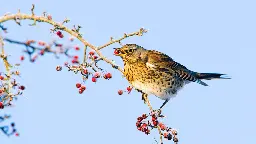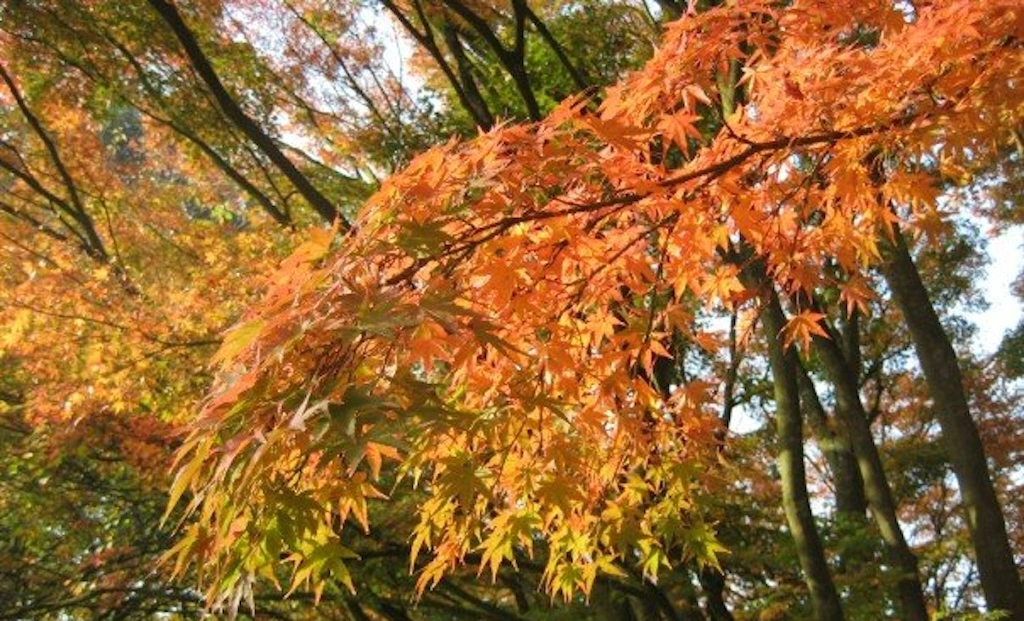
UK Nature and Environment
- How to attract robins into your garden this winterwww.walesonline.co.uk How to attract robins into your garden this winter
You need a wild corner and a log pile, as well as a way to keep away cats
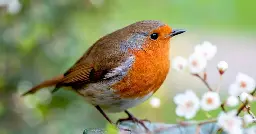
Robins are commonly associated with the festive season, and simply spotting one can be enough to make us feel festive. But attracting robins doesn’t have to be left to chance. According to wildlife experts, there are ways to increase your chances of seeing more of these charming birds in your garden this year.
Maria Kincaid, the head ornithologist at FeatherSnap, shares her tips for transforming your garden into a Robin Redbreast hotspot.
- Project to improve biodiversity at Somerset woodland
A project to increase biodiversity in a 'boring' Somerset woodland has enjoyed a promising start.
Work is being under taken at Goblin Combe, a former plantation woodland in the north of the county, by the Avon Wildlife Trust in a bid to boost the populations of three species of bat and Hazel Dormouse.
The site was previously a timber plantation, meaning the trees "are quite young and quite dull" for wildlife, reserve manager Andy Jones said.
- Thermal drone ‘game-changer’ for Manx seal surveys, trust sayswww.bbc.co.uk Thermal drone ‘game-changer’ for Manx seal surveys, trust says
A new thermal imaging drone is helping conservationists count seals on the Calf of Man.
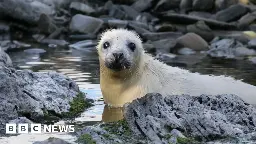
New drone technology was a “game-changer” for teams gathering data about seals on the Calf of Man this year, conservationists have said.
A total of 98 seal pups were recorded and monitored during the 10-week survey, which was the highest number since the recordings began in 2009.
Manx Wildlife Trust marine officer Lara Howe said the seals were “very well camouflaged against the rocks”, but thermal imaging made them “super easy to spot”.
- Stanley Johnson names first beavers born in Hampshire for 400 years
The first beavers to be born in Hampshire for 400 years have been officially named by the former PM's father Stanley Johnson.
Local children entered a competition to name the two baby beavers, but 'Boris' wasn't in the running, with Bobby and Barry chosen as the winning names.
The pair were born this summer in an enclosure at the 925-acre Ewhurst Park estate near Basingstoke.
Parents Chompy and Hazel were released into the enclosure in January 2023 as the first beavers in Hampshire since the 1600s.
Recent footage of the two baby beavers, called kits, shows them exploring their enclosure, eating plants and starting to learn how to gnaw and fell trees.
- Red squirrels ‘to vanish from England’ unless vaccine against squirrelpox fundedwww.theguardian.com Red squirrels ‘to vanish from England’ unless vaccine against squirrelpox funded
Conservation group warns species threatened by exploding populations of grey squirrels who carry lethal virus
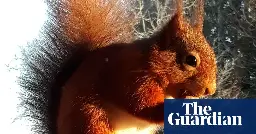
Red squirrels ‘to vanish from England’ unless vaccine against squirrelpox funded
Conservation group warns species threatened by exploding populations of grey squirrels who carry lethal virus Donna Ferguson Sat 16 Nov 2024 21.29 GMT
Red squirrels will soon disappear from England unless the government funds a vaccine against squirrelpox, one of the biggest groups set up to protect the species has warned.
Conservationists say the English population of non-native grey squirrels has exploded this year, triggered by warmer winters which enable mating pairs to feed and breed all year round, and estimate that 70% are carrying squirrelpox, a virus which is lethal only to red squirrels.
“We’re facing a huge surge of grey squirrels,” said Robert Benson, founder of Penrith and District Red Squirrel Group, which covers 600 square miles of Cumbria.
“We think they are breeding three or four times a year, and having four or five kits each time, leading to a massive expansion in grey squirrel numbers: 15 or 20 young grey squirrels are moving through the countryside [each year], from each breeding pair.”
- ‘It’s a national disgrace’: fury at sewage-filled Windermere over toxic algae and dead fishwww.theguardian.com ‘It’s a national disgrace’: fury at sewage-filled Windermere over toxic algae and dead fish
Campaigners blame United Utilities for blighting famous lake with raw effluent
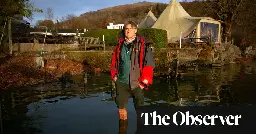
A short stroll from Beatrix Potter’s former farmhouse in the Lake District are the waters of Cunsey Beck, nestling in the breathtaking landscape that inspired the tales of childhood favourites Jeremy Fisher and Jemima Puddle-Duck.
Campaigners say the once clear waters are regularly blighted by raw sewage from a nearby works. New figures obtained by the Observer reveal the Near Sawrey plant is alleged to have illegally discharged untreated sewage on 56 days from 2021 to 2023.
Matt Staniek, from the campaign group Save Windermere, said: “Beatrix Potter was in awe of this natural landscape. If she was alive today she would be campaigning to stop what has become a national disgrace.”
- Views sought on wild beavers returning to Gloucestershirewww.bbc.co.uk Views sought on wild beavers returning to Gloucestershire
Wild beavers have been spotted close to Gloucestershire, prompting a survey from a wildlife trust.

People are being asked for their views on the reintroduction of wild beavers in Gloucestershire as a population has been spotted close to the county's borders.
Currently, there are three enclosed beaver colonies in Gloucestershire and no beavers living in the wild.
Gloucestershire Wildlife Trust (GWT) said there is a "real possibility" wild beavers could establish in the area as they have been seen close by, including on the River Avon.
- Isle of Man marshlands 'almost perfect wallaby habitat'www.bbc.co.uk Isle of Man marshlands 'almost perfect wallaby habitat'
Isle of Man wild wallaby numbers grow from a few wildlife park escapees to 1,000 over six decades.
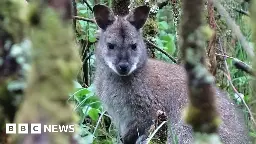
Conditions in a Manx marshland wallabies escaped to in the 1960s proved "almost perfect" for an expansion in the population to 1,000, a conservation charity has said.
Only a small number managed to break out of a nearby wildlife park, but recent surveys of the Ballaugh Curragh and its surrounding areas show numbers have swelled.
Manx Wildlife Trust chief executive Leigh Morris said the habitat was similar to Tasmania, which was one of the places the species is native to.
That allowed the wild population to grow in the north-west of the island, before migrating to other glens and forests over the past six decades, he said.
- Rescue mission begins after mysterious crayfish deaths in Northumberlandwww.theguardian.com Rescue mission begins after mysterious crayfish deaths in Northumberland
At least 100 white-clawed crayfish, the UK’s only native species, have been found dead since the end of September
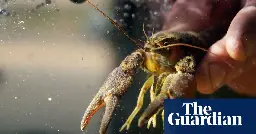
A “rescue mission” for native crayfish is under way in Northumberland after a population were found dead with mysterious patches on their shells.
The Environment Agency is working to save the internationally important species of native white-clawed crayfish in the River Wansbeck by searching for females with eggs to be taken and reared in a hatchery.
At least 100 individuals of the endangered species, which is the UK’s only native freshwater crayfish, have been found dead since the end of September and environment experts are perplexed as to what is causing the “concerning” mass die-off.
- Mersey Forest marks 30 years and nine million new treeswww.bbc.co.uk Mersey Forest marks 30 years and nine million new trees
The Mersey Forest project was launched to "bring forests nearer to the people" in urban areas.
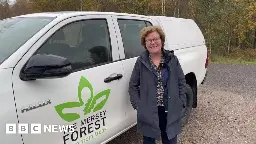
A forest is marking its 30th anniversary after the first plan to "bring forests nearer to people" was developed for parts of Merseyside and Cheshire.
Millions of trees have been planted as part of the Mersey Forest project, bringing a host of benefits for people and wildlife in urban areas.
In the last 18 months alone about 260 hectares of new woodland have been established on plots of land throughout the Liverpool City region and Cheshire - the equivalent of about 400 football pitches.
- National Trust Sefton land deal to bring 91,000 new treeswww.bbc.co.uk National Trust Sefton land deal to bring 91,000 new trees
The National Trust aims to convert disused farmland in Sefton into a thriving woodland habitat.
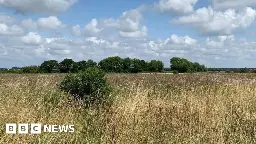
> About 91,000 new trees will be planted in new woodland areas after a council agreed to sell land to the National Trust. > >Sefton Council said about 193 acres (78 hectares) of disused farmland around Lunt Village, near Maghull, could now be used to create "more diverse, nature rich" habitats. > >The project, partly funded by The Mersey Forest’s Trees for Climate programme, is also intended to increase flood defences and could even provide a home for red squirrels. > >Trees will be planted between January and March, the council said. > > ... > > The council hopes the project will connect existing pockets of wetland and woodland and provide homes to a variety of wildlife.
See also:
- Plans to reintroduce 'flagship' white-tailed eagle species to Exmoor
The UK's largest bird of prey could soon be flying through the skies over Exmoor National Park, after an absence of more than two centuries.
Exmoor National Park Authority has proposed to reintroduce white-tailed eagles to the area, in a collaboration with the Roy Dennis Wildlife Foundation and Forestry England.
It's part of a wider initiative to restore the species to the skies of southern England.
- New Forest: UK's biggest bird of prey spotted huntingwww.stroudnewsandjournal.co.uk UK's biggest bird of prey spotted soaring with dead rabbit
New Forest residents have been treated to a flyover from the United Kingdom’s biggest bird of prey.
New Forest residents have been treated to a flyover from the United Kingdom’s biggest bird of prey.
Daily Echo Camera Club member Jordan Callaghan managed to capture a white-tailed eagle soaring over Holbury, carrying what appears to be a rabbit through the air.
One photo managed to snap the bird’s huge wing span, which can reach up to 2.5 metres, in all its glory.
- Government admits new Rosebank oil field approved unlawfullywww.bbc.co.uk Government admits new Rosebank oil field approved unlawfully
Climate campaigners are bringing a legal case they hope will halt drilling at two huge fossil fuel projects.

The UK government has admitted in court that the country's largest untapped oilfield, Rosebank off Shetland, was approved unlawfully.
The move came during a case brought by climate campaigners against both Rosebank and the Jackdaw gas field in the North Sea.
At the Court of Session in Edinburgh Chris Pirie KC, for the government, accepted that assessments did not include “the effects on climate of the combustion of oil and gas to be extracted from the fields.”
- Nature charities urge UK Government ministers to protect globally rare chalk streams in planning reform | Hampshire and Isle of Wight Wildlife Trustwww.hiwwt.org.uk Nature charities urge UK Government ministers to protect globally rare chalk streams in planning reform | Hampshire and Isle of Wight Wildlife Trust
A group of UK nature charities have written to Rt Hon Angela Rayner MP and Rt Hon Steve Reed OBE MP calling for action to protect the UK’s chalk streams in planning reforms.

A group of UK nature charities have written to Rt Hon Angela Rayner MP and Rt Hon Steve Reed OBE MP calling for action to protect the UK’s chalk streams in planning reforms.
The letter is headed by Hampshire and Isle of Wight Wildlife Trust and signed by various river, water and wildlife charities including The Rivers Trust, Angling Trust, River Action, Wild Trout Trust and The Wildlife Trusts. The letter leads on from the March for Clean Water earlier this month, when over 15,000 people including charities, campaigners and celebrities gathered in London calling for Government action to improve the health of rivers, lakes and seas.
The charities writing today urge the UK Government to integrate enhanced protections for chalk streams into reforms to the National Planning Policy Framework (NPPF). During the Government’s consultation on proposed changes to the NPPF (30th July – 24th September), more than 700 people urged action on protecting chalk streams.
- How particle pollution from fireworks harms UK air and riverswww.theguardian.com How particle pollution from fireworks harms UK air and rivers
Across Yorkshire, the air pollution measured on 5 November reached level seven on the government’s 10-point scale

The colours, bangs and excitement of fireworks thrill many of us but what looks pretty comes with a pollution penalty, harming air and rivers.
A network of three UK university research observatories have revealed the complexity of the unique air pollution that fireworks create.
Guy Fawkes fireworks and bonfires are rarely confined to the marking of the gunpowder plot on 5 November, as often people celebrate early. This year peaks in particle pollution were seen on the preceding Saturday evening, especially across the West Midlands and London, perhaps due to the combination of Diwali and Guy Fawkes fireworks events.
In most places the worst air pollution was measured on the night of 5 November, reaching level seven on the government’s 10-point scale across Yorkshire. Notable peaks in particle pollution were also seen across Merseyside, as well as north-east England, Worthing, Norwich, Bristol and Cardiff.
- UK's most beavery beaver supermoon for 400yrs
I just thought it worth noting that as far as the UK goes, tonight's full moon - a supermoon - which, at this time of year is known as the beaver moon according to some traditions, will be the most beavery beaver moon for 4 centuries, given the number of reintroductions and kits born around the UK over the last 12 months (building on decades of previous work towards these reintroductions, of course).
- Rare County Durham coastal habitat to be restored thanks to £1m funding boostwww.chroniclelive.co.uk Rare County Durham coastal habitat to be restored thanks to £1m funding boost
The wildflower-rich Magnesian Limestone grasslands along the county’s coastline from Noses Point, near Seaham, to Horden is going to be restored
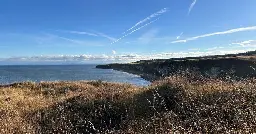
A project to restore 213 hectares of rare coastal habitat in County Durham has been launched with nearly £1m of funding.
Durham County Council has partnered with the National Trust and Durham Wildlife Trust to deliver the Coastal Grasslands Reconnected Project.
The project, which has received £975,000 from the Government’s Species Survival Fund, will create and restore the wildflower-rich Magnesian Limestone grasslands along the county’s coastline from Noses Point, near Seaham, to Horden.
- Scottish conservation agency accused of undermining law to protect birds of preywww.theguardian.com Scottish conservation agency accused of undermining law to protect birds of prey
NatureScot to allow shooting estates to greatly reduce area of grouse moors affected by licensing regime
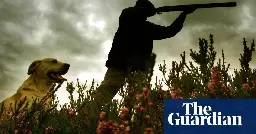
Wildlife charities have condemned a decision by Scotland’s nature conservation agency to dilute a new law designed to combat the illegal killing of birds of prey.
NatureScot, a government agency, has decided to greatly reduce the area of land affected by a new licensing regime for grouse moors after legal threats from shooting estates and land owners.
Campaign groups including the Royal Society for the Protection of Birds, the League Against Cruel Sports (LACS) and Revive Scotland have said they are furious, and have called on the Scottish government to close the loophole urgently.
- New study reveals half a century of change on Britain’s iconic limestone pavements - Lancaster Universitywww.lancaster.ac.uk New study reveals half a century of change on Britain’s iconic limestone pavements - Lancaster University
Fifty years of change on iconic limestone pavements has revealed mixed fortunes for one of the most distinctive landscapes in the UK.
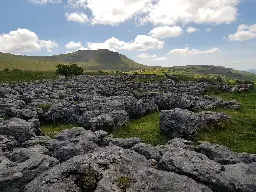
Fifty years of change on iconic limestone pavements has revealed mixed fortunes for one of the most distinctive landscapes in the UK.
The landscapes - which will be familiar to visitors to the Yorkshire Dales and fans of Harry Potter and the Deathly Hallows film – have, in many places, seen reductions of specialist species and more common less desirable species become more abundant.
However, it is not all bad news as the picture is very mixed across the UK’s areas of limestone pavement with some areas increasing in plant biodiversity.
- A climate of collaboration and volunteering helps UK’s threatened wildlifewww.metoffice.gov.uk A climate of collaboration and volunteering helps UK’s threatened wildlife
A unique collaboration between the Met Office and The Wildlife Trusts has driven a series of projects examining the impacts of weather and climate change on wildlife and their habitats across the UK.
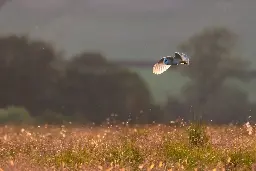
A unique collaboration between the Met Office and The Wildlife Trusts has driven a series of projects examining the impacts of weather and climate change on wildlife and their habitats across the UK.
Dr Debbie Hemming is a Met Office scientist who oversaw the projects. She said: “A couple of years ago Met Office staff voted for The Wildlife Trusts to become our corporate charity.
“Building on this success and popularity of this relationship many of our colleagues – including climate scientists – realised they could use their expertise and time to help understand more about the impacts of weather and climate change on threatened species.
- Birds of a feather - restoring habitats for seabirdswww.gov.uk Birds of a feather - restoring habitats for seabirds
Natural England launches innovative habitat restoration project by creating safe spaces for seabirds within the Solent.
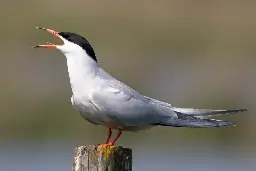
Natural England is pleased to announce the successful launch of a pioneering habitat restoration project aimed at supporting breeding seabirds in the Solent. The initiative, part of the broader Solent Seascape Project, focuses on creating vital nesting habitats for terns and other seabirds.
The project aims to provide suitable nesting sites for four species of terns - common, sandwich, little, and roseate - and other breeding seabirds. Initial trials with a single shingle-topped raft in April 2024 proved successful, attracting the first common terns to successfully breed on the national nature reserve for over 20 years. The new shingle islands are expected to benefit both breeding seabirds in spring and summer, and overwintering wading birds.
- Early rewilding site secured for nature after ‘outpouring’ of public supportwww.independent.co.uk Early rewilding site secured for nature after ‘outpouring’ of public support
Strawberry Hill, a farm left to nature decades ago that is now home to rare nightingales and turtledoves, has been bought by a local wildlife trust.
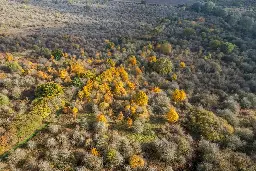
A “unique” site for nightingales and other wildlife on farmland left to go wild decades ago has been saved following a £1.5 million appeal.
Conservationists are celebrating the success of saving Strawberry Hill in Bedfordshire, which saw nearly £500,000 raised by more than 3,800 individual public donations plus a substantial private donation and contributions from trusts and funds.
The previous owner of the 377-acre site stopped farming his land 37 years ago – decades before “rewilding” became a trend.
- Government proposes testing bathing waters in England and Wales all year roundwww.theguardian.com Government proposes testing bathing waters in England and Wales all year round
Sites currently only tested for dangerous pollution during ‘bathing season’ from May to September
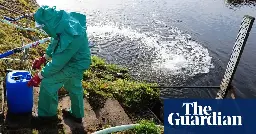
Bathing waters in England and Wales could be tested all year round in a government shake-up to water pollution rules.
At the moment, designated bathing sites are only tested for dangerous pollution that could make swimmers sick during the “bathing season”, which runs from May to September.
Campaigners have long argued that people use waterways for recreation such as swimming, fishing and boating throughout the year, so the testing should be consistent. Additionally, the May-September period is often the driest of the year, so it is likely for there to be fewer spills from sewers during that time.
- Northamptonshire Nene Wetlands beaver enclosure delayedwww.bbc.co.uk Northamptonshire Nene Wetlands beaver enclosure delayed
The local Wildlife Trust says "extreme flooding" has meant a setback to the project.
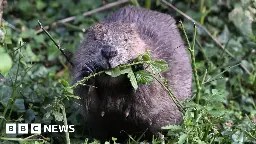
The planned reintroduction of beavers to a county after 400 years has been delayed by "extreme flooding".
It had been hoped that a £180,000 habitat for the dam building creatures in the Nene Wetlands nature reserve, near Rushden in Northamptonshire, would be completed last month.
But the local Wildlife Trust, which is working with Anglian Water to release a family of beavers into a new enclosure at Delta Pit, said it was now aiming to complete work "before Christmas".
- Wild bird numbers continue ‘alarming’ decline in UK, Defra figures showwww.theguardian.com Wild bird numbers continue ‘alarming’ decline in UK, Defra figures show
All bird species have declined in number, after suffering habitat loss, pesticide use, climate breakdown and bird flu
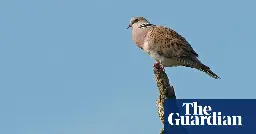
Wild bird numbers in the UK are continuing to fall despite government promises to halt nature decline by 2030.
Data released by the government on Tuesday shows that over the past five years, all bird species have faced population decline after suffering from habitat loss, pesticide use, climate breakdown and bird flu. Overall, bird species have declined in number UK-wide by 2% and in England by 7% in the five years since 2018.
Faring the worst are farmland birds, which have declined in number severely – by about 61% over the long term (since 1970) and 9% in the short term (the five years 2018-2023) – and woodland birds, whose numbers have fallen by about 35% over the long term and 10% in the short term.
- Humber Forest volunteers plant over a thousand trees to mark the start of planting season
Humber Forest has planted its first trees of the new tree planting season, last week, with over 1,000 saplings planted at sites across the region.
The trees were planted in a range of projects across the county, including at a primary school in Skidby, and farmland in Goole and Holderness.
The volunteers educated the children at Skibdy Primary School on the essential role trees play in preserving our local environment, and in helping to prevent soil erosion, and providing habitats for wildlife.
- UK injects £14.5 million in land use and net zero researchwww.ukri.org UK injects £14.5 million in land use and net zero research
Five UK research projects have each received a share of £14.5 million under phase two of the Transforming Land Use for Net Zero, Nature and People programme.
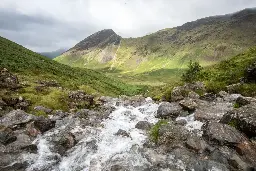
Five UK research projects have each received a share of £14.5 million under phase two of the Transforming Land Use for Net Zero, Nature and People programme.
The UK’s efforts to achieve net zero emissions by 2050 have been significantly boosted thanks to a £14.5 million investment by UK Research and Innovation (UKRI) and government partners.
This latest funding marks phase two of the Transforming Land Use for Net Zero, Nature and People programme (LUNZ).
It supports five ambitious research projects that aim to revolutionise agricultural practices, land use change and soil health in the pursuit of a more sustainable future.
- NEWS: Groundwork calls for immediate action on green jobs to tackle nature decline across the UK - Groundworkwww.groundwork.org.uk NEWS: Groundwork calls for immediate action on green jobs to tackle nature decline across the UK - Groundwork
A coalition of charity and non-profit organisations have joined forces to call on the government and the environmental sectors to do more to create

The call to action – led by Groundwork, The King’s (formerly Prince’s) Trust, Mission Diverse, Disability Rights UK and Youth Environmental Service – sets out the need to ensure equity in the transition to a greener economy, through the creation of entry level green jobs that help tackle the climate and nature crises.
The call is made in ‘Force of Nature – Reversing Nature’s Decline and Promoting Equity in the Green Transition’, a publication written by the five charities and endorsed by a wide range of key nature-sector organisations including RSPB, the National Trust, Wildlife & Countryside Link, WWF-UK and Bumblebee Conservation Trust.
A key ask for central and local government is the prioritisation of waged work placements within national employment support programmes and regional plans for skills and growth. The document also recommends that the creation of a ‘National Nature Service’ should be a priority for the Labour government, through paid environmental work placements for all young people, similar to the scheme being progressed by a coalition of organisations across Wales*.
- Hoads Wood: Contractors appointed to clear ancient woodland wastewww.bbc.co.uk Hoads Wood: Contractors appointed to clear ancient woodland waste
The Environment Agency 's contractors prepare to clear 35,000 tonnes of illegally dumped rubbish.
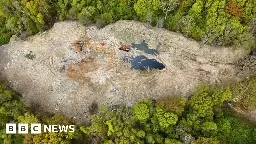
Contractors who will clear up 35,000 tonnes of dumped waste from a Kent woodland have been appointed.
The waste from illegal fly-tipping in Hoads Wood, near Ashford, covers a 100x60m area and is 4m deep in some spots.
Campaigners had threatened the Environment Agency with legal action in August unless they urgently cleared the site following a ministerial directive in May.
- Climate change drives butterflies north
New research reveals ten butterfly species have increased significantly in Scotland in the past 40 years, and it is thought climate change could be pushing them northwards.
The latest Scottish Biodiversity Indicator, published by NatureScot today, examines the long-term trend for butterflies since 1979. The scientific report finds that, from 1979 to 2023, there has been an overall 35 percent increase across the 20 species analysed.
Generalist butterfly species, which use a range of habitats, have increased by half, while populations of specialist species, which are limited to specific habitats like heathland, remain stable.
- New report highlights disastrous cost of inaction on nature restorationscottishwildlifetrust.org.uk New report highlights disastrous cost of inaction on nature restoration
A new report published today has revealed the potentially devastating consequences Scotland could face if accelerated action is not taken to protect and restore nature. The report, titled “Act now, …
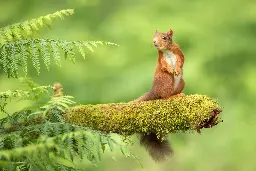
A new report published today has revealed the potentially devastating consequences Scotland could face if accelerated action is not taken to protect and restore nature.
The report, titled “Act now, save later”, is a collaboration between the Scottish Wildlife Trust and The University of Edinburgh’s Centre for Sustainable Forests and Landscapes, and was funded by the Esmée Fairbairn Foundation.
It examines two potential scenarios of what Scotland could look like in 2045, depending on how much funding and support is given to nature conservation. These scenarios are based on desk-based research and information discussed at a workshop with stakeholders working in the fields of economics, biodiversity and wider environmental issues.
- Data shows low fruit yield after wet spring
The latest update from Nature's Calendar, the Woodland Trust’s citizen science project, suggests knock-on effects of heavy rainfall earlier in the year.
The effects of a wet spring may be extending from bees and butterflies to birds, with data suggesting that fruits are scarcer than usual. After 2023’s bumper hawthorn berry crop, numbers have dropped significantly this year, and the hedgerows are looking much less inviting for hungry wildlife.
According to Nature's Calendar data, hawthorn berries have now hit their lowest numbers. As have elderberries, which are scoring just 2.8 on the fruit scale, comfortably below their annual average of 3.66.
Other species such as ash, ivy and oak are also showing their lowest fruit scores since current records began in 2001.
- 23 native species conservation shortlisted for the Great British Wildlife Restoration | Biazabiaza.org.uk 23 native species conservation shortlisted for the Great British Wildlife Restoration | Biaza
The British and Irish Association of Zoos and Aquariums (BIAZA) is the professional body representing the best zoos and aquariums in the UK and Ireland.
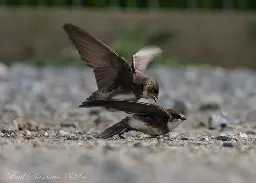
Great British nature is in trouble. From polluted waterways to the threat of invasive species, Britain is one of the most nature depleted countries in the world. And yet native species are receiving help from heroic conservation projects restoring habitats, educating communities and even reintroducing species.
23 native species conservation projects, undertaken by British zoos and aquariums, have been shortlisted for a prestigious national award in recognition of their heroic efforts. The Great British Wildlife Restoration seeks to shine a light on conservation going on all around us, with a winner depending on the votes of Members of Parliament and the House of Lords.
The competition shows a huge diversity in the types of conservation going on in Britain. They include preventing the extinction of Wales’ rarest tree, reintroducing harvest mice in Northumberland, the creation of nesting sites for swifts in Hertfordshire and even the breeding of medicinal leeches in Scotland.
- Sefton: Rimrose Valley bypass plans scrapped in budgetwww.bbc.co.uk Sefton: Rimrose Valley bypass plans scrapped in budget - BBC News
The controversial proposal was set to see a bypass built through a Merseyside park.

cross-posted from: https://feddit.uk/post/19859084
> > A £250m bypass planned to go through a Merseyside country park has been scrapped in the budget. > > > >The proposal for a dual carriageway through Rimrose Valley Country Park in south Sefton was first announced in 2017 to improve access to the Port of Liverpool. > > > >In budget documents released today, the Transport Secretary said the A5036 Princess Way scheme would not progress as it was “unfunded and unaffordable”. > > > >Bootle’s Labour MP Peter Dowd, whose constituency includes the port, said: "Rimrose Valley is a green lung for my constituents and the last thing we wanted was a road to be built through it." > > > >He added: "We now have to ensure that the work to develop a long term, environmentally sustainable alternative continues."
- Oysters doing well in Firth of Forth after reintroduction, say expertswww.theguardian.com Oysters doing well in Firth of Forth after reintroduction, say experts
Early signs of success seen in area where native European oysters were fished to local extinction by early 1900s

Thousands of oysters released into the Firth of Forth appear to be thriving again after a century-long absence from the Scottish estuary since they were lost to overfishing.
Marine experts from Heriot-Watt University who have helped reintroduce about 30,000 European flat oysters to the estuary said divers and underwater cameras showed they were doing well.
The Firth of Forth was once home to one of the largest native European oyster reefs in the north-east Atlantic, yielding up to 30 million oysters a year during the 1800s, but by the beginning of the 1900s they had been fished to local extinction.
- Big plan for Wiltshire's bats needs to raise £60kwww.bbc.co.uk Big plan for Wiltshire's bats needs to raise £60k
Wiltshire Wildlife Trust wants to help bats with improved habitats on six of its reserves.
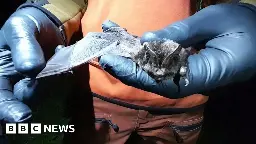
Bats will be getting a boost if a wildlife trust can raise £60,000 for Habitat for Bats appeal.
After the success of a smaller appeal to help a specific group of bats, Wiltshire Wildlife Trust has created a more ambitious plan to help the animals at six of its reserves.
The cost to improve habitats and monitoring is estimated to be £100,000, so this fundraising push is to "kick start this critical work".
- Saltmarshes to be restored on rivers Tyne and Wearwww.bbc.co.uk Saltmarshes to be restored on rivers Tyne and Wear
An environmental charity says there is a need to compensate for decades of heavy industrialisation.
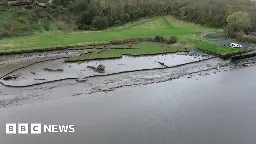
Saltmarshes could be restored to protect natural habitats on the banks of two rivers and help tackle climate change by storing carbon.
Environmental charity Groundwork North East & Cumbria has applied to Newcastle and Sunderland councils for permission for work at two sites on the rivers Wear and Tyne.
This would "compensate for centuries of heavy industrialisation" during which riverbanks were built on, the charity said.
- Flagship UK-wide nature project shows people-power dramatically helps communities and wildlife | The Wildlife Trustswww.wildlifetrusts.org Flagship UK-wide nature project shows people-power dramatically helps communities and wildlife | The Wildlife Trusts
£5 million Nextdoor Nature programme worked with over 1,600 communities to take action for nature

A report published today reveals the striking results of a National Lottery Heritage Fund £5 million Nextdoor Nature programme which enabled The Wildlife Trusts to work with communities across the UK for two years. The programme originally intended to reach 200 communities – but instead exceeded that 8 times over, reaching more than 1,600.
At a time when a recent UK Government evaluation of green prescribing showed that connections to nature can bring about big reductions in symptoms of anxiety and depression, and impressive improvements in well-being*, the benefits of the Nextdoor Nature programme for people are significant. Extraordinary transformations have taken place across the country over the last two years in communities that have been traditionally or historically excluded from making decisions about nature and the environment in their local areas. The benefits of nature connectedness have never been better appreciated.
Nextdoor Nature has given people the skills, tools and opportunity to take action for nature. The projects have included working with Roma communities in East Belfast to support wildlife gardening, linking local schools with rare bird reintroduction schemes in Kent, rewilding Derby town centre and a nature-friendly faith space in Slough. Nextdoor Nature’s legacy will live on beyond the end of the funding so that local communities can continue the work using their new skills and contacts.
- Scotland’s ‘industrial-scale’ forestry triggers opposition in border town
Pensioner Archie Hyslop fears for the future of Langholm, a former mill town at the heart of Scotland’s legacy textile industry.
Dense forests are encircling his hometown near the border with England as investors snap up land to plant fast-growing trees for timber and carbon credits.
In response, residents have formed an action group to challenge the latest afforestation scheme that would, in their eyes, diminish the landscape’s natural beauty and biodiversity.

